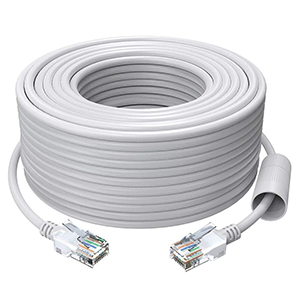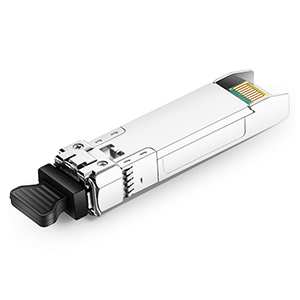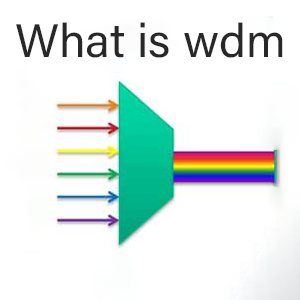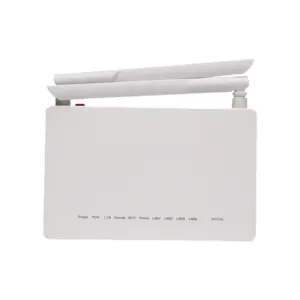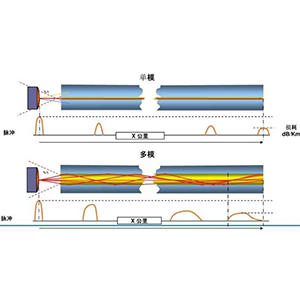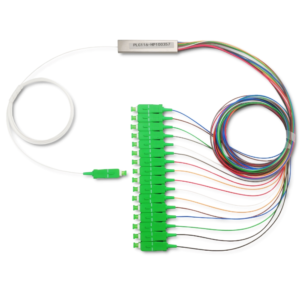Different types of fiber optic patch cords play an important role in optical networks. This article will focus on comparing the differences between APC (angled physical contact) fiber optic patch cords and LC fiber optic patch cords. We will first explain the basic structure and function of fiber optic patch cords and explain its important role in optical networks. Next, we will define the technical characteristics and main advantages of APC fiber optic patch cords.
Then, we will define the technical characteristics and main features of LC fiber optic patch cords. Finally, we will focus on comparing the differences between APC fiber optic patch cords and LC fiber optic patch cords in terms of end face shape, connector type, optical signal transmission, and application scenarios, and explain the impact of these differences on network deployment.
Overview of Fiber Optic Patch Cords
Fiber optic patch cords are short optical fiber connectors used to connect between optical fiber devices or between optical fiber and devices. It is equipped with connectors to ensure efficient transmission of optical signals and is widely used in communication networks, data centers, and optical fiber test systems.
Basic structure and function of fiber optic patch cords:
Fiber optic patch cords are a type of optical fiber connection cable used to connect optical network devices. Its basic structure includes:
- Fiber core: responsible for the transmission of optical signals, can be single-mode or multi-mode optical fiber.
- Protective layer: including buffer layer, sheath layer, etc., providing mechanical and environmental protection.
- Fiber connector: such as SC, LC, FC, etc., used for detachable connection with device ports.
The main functions of fiber jumpers are:
- To interconnect optical network devices such as switches and routers.
- To establish a reliable optical transmission path between devices to achieve end-to-end optical transmission.
- To ensure the transmission quality and reliability of optical signals during the connection process.
Through the flexible connection of fiber jumpers, a complete optical network topology can be formed.
The important role of fiber jumpers in optical networks:
Fiber jumpers play a key role in optical networks, which is mainly reflected in the following aspects:
(1) Realize optical connection between devices:
- Connect various optical network devices, such as OLT, ROADM, servers, etc.
- Establish end-to-end optical transmission path and complete the physical connection of optical network.
(2) Ensure transmission quality and reliability:
- Good optical interface design ensures the quality of optical signal transmission.
- High reliability structural design improves the long-term stability of connection.
(3) Support the construction of optical network topology:
- Flexible connector type and length selection to meet different network topology requirements.
- Simplify on-site construction and maintenance, and improve network deployment efficiency.
(4) Adapt to a variety of application scenarios:
- Widely used from access network, trunk network to data center.
- Meet the connection performance requirements of different optical networks.
In short, as the basic connection element in the optical network, the optical fiber jumper plays a key role in realizing optical transmission between devices, ensuring transmission quality, supporting network topology, and adapting to a variety of application scenarios. It is an indispensable and important component.
APC fiber jumper
APC fiber jumper (Angled Physical Contact) adopts an angled end face design to reduce signal reflection and return loss, and improve the quality of optical signal transmission. It is often used in optical fiber communications, data centers, and high-frequency network applications that require high signal integrity and low loss.
Technical features of APC fiber jumpers:
APC (Angled Physical Contact) fiber jumpers are fiber optic connection cables with a special fiber end face structure. Its main technical features include:
(1) Fiber end face uses an angled interface:
- The end face of the fiber core is processed into an angle of 8° to 15°.
- This angled end face is the core design feature of the APC jumper.
(2) Special fiber connector design:
- APC jumpers use matching angled fiber connectors.
- The internal structure of the connector is different from that of ordinary connectors to adapt to the angled end face.
This special end face and connector design is an important technical basis for APC fiber jumpers.
Main advantages of APC fiber patch cord:
Due to its special end face design, APC fiber patch cord exhibits excellent performance in the following aspects:
(1) Low reflection loss:
- APC patch cord can reduce reflection loss to an extremely low level, usually less than -60dB.
- It is conducive to ensuring the quality and stability of optical signal transmission.
(2) High isolation:
- APC patch cord can achieve an isolation of up to 60dB at the physical layer.
- Ensure the independence of different optical channels to avoid mutual interference.
(3) Suppress optical interference:
- The low reflection characteristic can effectively suppress the system performance degradation caused by optical interference.
- Improve the overall reliability and stability of the optical network.
In short, APC fiber jumpers, with their special angled end face design, have shown obvious advantages in key performance indicators such as low reflection, high isolation and suppression of optical interference, and are widely used in high-speed, high-performance optical networks.
LC fiber jumpers
LC fiber jumpers use miniaturized LC connectors and are suitable for high-density fiber connections. Their compact design and reliable performance make them widely used in data centers and communication networks, providing stable signal transmission and saving space.
Technical features of LC fiber jumpers:
LC (Lucent Connector) fiber jumpers are fiber connection cables that use LC-type fiber connectors. Their main technical features include:
(1) Using LC-type fiber connectors:
- LC connectors use a push-pull locking design and are compact.
- LC connectors are widely used in high-density fiber optic wiring environments.
(2) The fiber end face is a vertical plane:
- LC fiber optic patch cords use flat end face optical fibers instead of angled end faces.
- This is a major difference between LC patch cords and APC patch cords.
This LC type fiber optic connector and vertical flat end face design are the core technical features of LC fiber optic patch cords.
Main features of LC fiber optic patch cords:
LC fiber optic patch cords have the following main features due to their unique structural design:
(1) Small and compact size:
- LC connectors are smaller than traditional SC or FC connectors.
- It is conducive to application in dense wiring environments and improves space utilization.
(2) Suitable for dense wiring environments:
- The push-pull design of the LC connector is easy to operate and facilitates on-site installation.
- The small size facilitates deployment in compact spaces such as racks and panels.
(3) Stable and reliable performance:
- The design of the LC connector has good mechanical properties and environmental adaptability.
- The overall structure of the jumper is reliable, which is conducive to ensuring long-term transmission stability.
In short, LC fiber jumpers, relying on their technical characteristics of miniaturization and high-density wiring, are widely used in various optical network environments that require compact deployment. It is a fiber connection solution with stable and reliable performance.
Comparison of the differences between APC fiber jumpers and LC fiber jumpers
The main differences between APC fiber jumpers and LC fiber jumpers are the connector type and end face design. APC fiber patch cords use a beveled end face design to reduce return loss, while LC fiber patch cords use a small LC connector, which is suitable for high-density connection applications.
End face shape:
(1) APC fiber patch cords:
- Use an 8° to 15° beveled fiber end face.
- The beveled end face can effectively suppress the reflection of optical signals.
(2) LC fiber patch cords:
- Use a vertical fiber end face.
- The reflection loss of the flat end face is relatively high.
The difference in end face shape directly affects the reflection performance of the two patch cords. The APC beveled end face can reduce the reflection loss to an extremely low level, while the reflection loss of the LC flat end face is higher.
Connector type:
(1) APC fiber jumper:
- Use special APC fiber connectors that match the angled end face.
- The APC connector is complex in design and relatively expensive.
(2) LC fiber jumper:
- Use standard LC fiber connectors.
- The LC connector is simple in design and relatively inexpensive.
Different connector designs determine their applicability in application scenarios. APC connectors are more suitable for high-performance networks with strict requirements on reflection performance, while LC connectors are widely used in general dense wiring environments.
Optical signal transmission:
(1) APC fiber jumper:
- Excellent reflection suppression performance, which is conducive to ensuring transmission quality.
- High isolation ensures the independence of different channels.
(2) LC fiber jumper:
- Reflection loss is relatively high, which may affect some transmission performance.
- Isolation is relatively low, and there is a certain risk of channel interference.
The difference in optical signal transmission quality determines the impact of APC and LC on network performance. The excellent transmission characteristics of APC make it more suitable for high-speed network applications with strict requirements on transmission quality.
Application scenarios:
(1) APC fiber jumper:
- Widely used in high-performance optical networks such as DWDM, FTTH, and data centers.
- Excellent reflection and isolation performance is suitable for these scenarios with strict requirements on transmission quality.
(2) LC fiber patch cord:
- Mainly used in densely wired environments, such as racks, panels, etc.
- Miniaturization and low cost make them more suitable for such space-constrained scenarios.
In summary, APC and LC fiber patch cords have obvious differences in end face shape, connector type, optical signal transmission characteristics, and application scenarios. These differences determine their applicability in different network environments, and they need to be selected according to specific application requirements.
Summary
Fiber patch cords are key components for building high-performance optical networks, and choosing the right APC or LC patch cord is crucial. Our company has long focused on the research and development and application of fiber patch cords and has rich practical experience. We provide various high-performance APC and LC fiber patch cord products, which are widely used in data centers, 5G fronthaul, FTTH and other fields.
Our fiber optic patch cords use industry-leading manufacturing processes and have achieved excellent levels in key performance indicators such as reflection loss and isolation. At the same time, our team of engineers will provide you with professional demand analysis and solution design services to ensure that the selected fiber optic patch cords can meet your actual needs to the greatest extent. Contact us now to learn more. We will do our best to provide you with the best quality products and solutions.
APC Patch Cord and LC Patch Cord FAQ
An APC (Angled Physical Contact) patch cord is a type of optical fiber cable that features connectors with an angled end-face. This design minimizes signal reflection and loss by reducing the amount of light reflected back into the fiber.
An LC patch cord is a fiber optic patch cable that uses LC (Lucent Connector) connectors, which are small, low-profile connectors designed for high-density applications. The LC connector features a push-pull coupling mechanism and a ceramic ferrule for precise alignment.
APC patch cords refer to the type of connector end-face design (angled for reduced reflection), while LC patch cords refer to the type of connector used (small form-factor with a push-pull mechanism). An APC LC patch cord combines both features: it has an LC connector with an angled end-face.
The angled end-face on an APC patch cord reduces signal reflection (return loss) by angling the fiber end-face at 8 degrees. This design minimizes back-reflected light, improving signal integrity and performance in high-speed and high-precision applications.
Yes, an LC patch cord can be an APC type if it features an angled end-face. In this case, it would be referred to as an LC APC patch cord, combining the LC connector with the APC angled design for reduced signal reflection.
APC patch cords are used in applications requiring minimal signal reflection, such as telecommunications, data centers, and high-speed fiber optic networks.
LC patch cords are used in high-density applications due to their compact size. They are commonly used in data centers, telecom networks, and other environments where space is limited.
APC LC patch cords typically have low insertion loss, around 0.2 dB to 0.5 dB. The low reflection and high precision of the APC design contribute to this low loss, making them suitable for high-performance networks.
Consider the specific requirements of your network, such as the need for reduced signal reflection (APC) and the type of connector form factor (LC). An APC LC patch cord may be chosen if both low reflection and a compact connector are needed.
No, they are not mutually exclusive. An APC patch cord refers to the end-face design for reduced reflection, while LC patch cords refer to the connector type. An APC LC patch cord combines both features: it uses an LC connector with an angled end-face.


